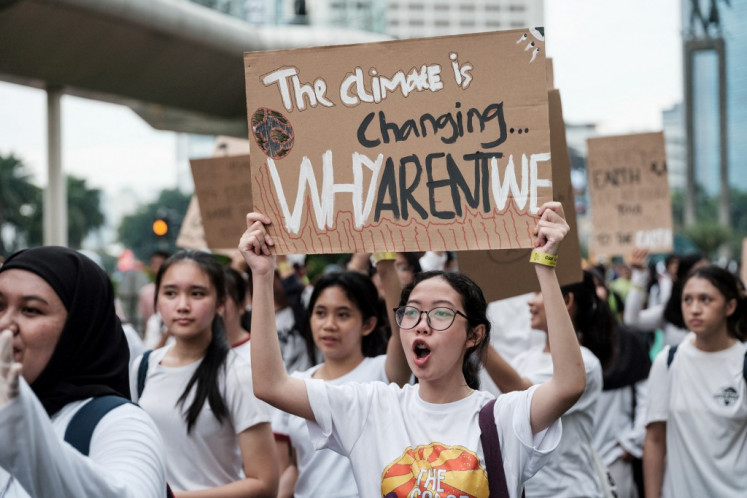World Bank upgrades global growth forecasts as recovery strengthens
Change Size
 Businessmen and women pray for a good business year to bring in the New Year, at Kanda shrine in Tokyo on Jan. 4, 2018. (AFP/Toshifumi Kitamura)
Businessmen and women pray for a good business year to bring in the New Year, at Kanda shrine in Tokyo on Jan. 4, 2018. (AFP/Toshifumi Kitamura)
F
or the first time in many years, the World Bank's outlook for the global economy is better than expected rather than worse, with all regions seeing improved growth, according to its latest forecast released Tuesday.
However, the bank warns that countries must make investments to improve their growth prospects, and the time to do that is before the next economic crisis hits, as it inevitably will.
"The big story is a good story. Global growth stronger than what we expected," World Bank economist Ayhan Kose told AFP, noting that all the forecasts are better than those in the June edition of the Global Economic Prospects report.
Kose, who heads the World Bank's Development Prospects Group -- which twice a year prepares the global economic forecasts -- notes that the world is seeing "highly synchronized" economic expansion across regions.
That includes solid growth in the "big three" advanced economies -- the United States, the eurozone and Japan -- and improvements in the important emerging market economies.
In addition, large commodity exporting economies like Russia and Brazil -- that were struggling and saw their economies contract in 2016 -- recovered last year.
Higher growth
Since the last forecast in June, the World Bank has upgraded nearly all of its forecasts, with global economic growth now expected to rise to 3.0 percent for 2017, three-tenths of a point higher than the prior estimate.
Growth is expected to hit 3.1 percent this year, and 3.0 percent in 2019.
The biggest gains are in advanced economies, which were revised up four-tenths for 2017 and 2018, to 2.3 percent and 2.2 percent, respectively.
But for 2019 and 2020, those economies are seen slowing to 1.9 percent and 1.7 percent, the report said.
Euro area growth was revised up 0.7 points to 2.4 percent in 2017, and another 0.6 points to 2.1 percent for 2018.
The United States saw a smaller upgrade to 2.3 percent last year and 2.2 percent this year, while Japan rebounded to 1.7 percent in 2017 and an expected 1.3 percent this year.
The report raised its forecast for China in 2017 by three-tenths to 6.8 percent, and sees 6.4 percent GDP expansion this year.
'Downside risks'
The efforts by central banks to keep interest rates low has helped stabilize the global economy and fueled the recovery, Kose said in an interview.
However, "downside risks continue dominating the outlook," he cautioned.
He warned that "history will repeat itself," and like all recoveries, "this expansion will end at some point."
Risks include rising debt levels, which are more concerning given that central banks are beginning to raise interest rates and could do so more quickly if the recovery starts to ignite inflation, Kose said.
Another risk are the "escalating trade restrictions."
While Kose did not specifically name the United States, President Donald Trump has taken a very aggressive stance on trade policy.
The Republican has targeted China, hitting Beijing with numerous trade complaints, and sought to renegotiate free trade agreements, including the NAFTA pact with Canada and Mexico.
Investment needed
The World Bank said its report was "a clarion call for public action" to prevent growth from slowing.
Kose said increasing the ability of countries to grow faster is "the single most important issue for the global economy."
The World Bank recommends a combination of improvements in education and health systems; high-quality investment; and labor and business reforms that together "could yield substantial long-run growth dividends and thus contribute to poverty reduction."
Removing obstacles to getting women into the workforce is a key component for many countries, Kose said.
Potential growth was 2.5 percent from 2013 to 2017, 0.6 percentage points below its average a decade ago, with an even steeper decline in emerging market and developing countries, the bank said.
That decline is expected to widen further without investment.
"To arrest and possibly reverse this decline in potential growth, emerging market and developing economies need to accelerate investment in both physical and human capital," the World Bank said.
"Today, the costs of neglecting these principles have gone sky-high."









